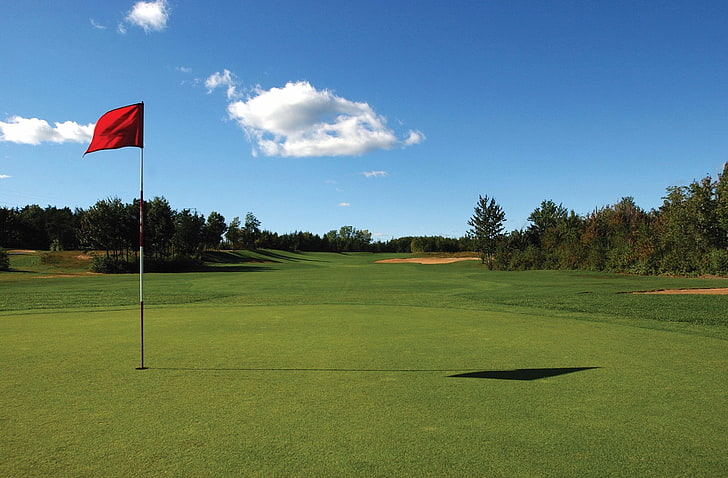
Golf is a sport that transcends mere competition; it is an intricate dance between nature and skill, a pursuit that has captivated players and fans alike for centuries. The lush green landscapes, the sound of a perfectly struck ball, and the thrill of sinking a long putt create an experience that is as much about personal achievement as it is about camaraderie on the course. Whether you are a seasoned pro or a beginner just picking up a club, the game offers a unique blend of challenge and tranquility that can be both engaging and rewarding.
As we delve into the art and science of golf, we will explore not only the techniques and strategies that define the game but also the rich history and culture that surround it. From the evolution of equipment to the mental aspects of maintaining focus and composure, golf is a complex interplay of physical prowess and mental fortitude. Join us on this journey as we uncover what makes golf not just a sport, but a lifelong passion for many individuals around the world.
The Evolution of Golf
Golf has a rich history that dates back several centuries, with its origins believed to be found in 15th-century Scotland. The game was played on the windswept links, where players would hit a feather-stuffed ball with a wooden club towards a series of holes. This early version of golf laid the groundwork for the modern sport we know today, as it emphasized skill, precision, and the enjoyment of the natural landscape.
Throughout the years, golf evolved significantly, particularly in the 18th and 19th centuries. The establishment of formal rules and the creation of the first golf clubs marked a turning point in the game’s development. The prestigious Old Course at St Andrews became the epicenter of golf, influencing how the game was played and organized. The introduction of metal clubs and advancements in ball technology further transformed the sport, making it more accessible and appealing to a wider audience.
The 20th century saw golf explode in popularity, fueled by the emergence of professional tournaments and iconic players. The advent of television brought the sport to millions of fans around the world, elevating stars like Arnold Palmer, Jack Nicklaus, and Tiger Woods into the status of global icons. Today, golf is not only a cherished pastime but also a major professional endeavor, with millions participating and significant investments in courses, equipment, and innovation, ensuring that the game continues to thrive and evolve.
Techniques and Skills
Mastering the various techniques and skills in golf is essential for both budding enthusiasts and seasoned players. One of the most fundamental skills is the grip. A proper grip allows for better control of the club and ultimately improves accuracy and distance. There are several types of grips, such as the interlocking grip, overlapping grip, and the ten-finger grip. Each player may find one more comfortable than the others, but experimentation is key to finding the grip that enhances individual performance.
Another critical aspect of golf is the stance and posture. A balanced and stable stance lays the foundation for a successful swing. Players must align their feet shoulder-width apart, with knees slightly flexed, and their weight distributed evenly. This balance helps create a smooth and controlled swing. Additionally, maintaining a strong core and good posture ensures that the player can generate power while remaining relaxed and fluid throughout the motion, contributing to better shot execution.
Lastly, the follow-through is often overlooked but is crucial for achieving accuracy and distance. A strong follow-through indicates that the player has executed their swing properly. It should be smooth and fluid, guiding the clubhead in the intended direction. Practicing the follow-through can help golfers develop consistency in their game and achieve better results on the course. By focusing on these techniques and skills, players can refine their game and enjoy the art and science of golf even more.
The Role of Equipment
The right equipment is essential in golf, influencing performance and enhancing the overall experience. Clubs are often regarded as the most critical component, with different types designed for various aspects of the game, such as drivers for long-distance tee shots and putters for accuracy on the greens. Choosing the right set of clubs tailored to a player’s skill level and playing style can significantly affect their game. Advanced materials and technology have led to the development of clubs that provide better control, distance, and feel, making it easier for players to improve.
In addition to clubs, the importance of golf balls cannot be overlooked. The choice of ball can impact distance, spin, and feel, with different designs catering to various levels of play. Players often experiment with different brands and types to discover which ball complements their style of play the best. Factors such as compression, cover material, and dimple patterns all contribute to the ball’s performance in the air and on landing, illustrating the need for careful selection based on individual preferences.
Finally, golf attire and footwear play a pivotal role in the sport. Comfortable and appropriate clothing helps players move freely, while specialized golf shoes provide traction and support during swings and walks on the course. The right equipment extends beyond just clubs and balls; it encompasses everything that contributes to a player’s comfort and confidence. Investing in quality gear can inspire players to focus on their technique and performance, ultimately enhancing their enjoyment of the game.
Golf course reviews in Delaware
Environmental Impact
Golf courses often occupy significant land areas, which can lead to habitat loss and fragmentation for local wildlife. The transformation of natural ecosystems into manicured greens can disrupt local flora and fauna. In some regions, the construction of golf courses has been linked to the decline of native species, as the unique habitats they once thrived in are replaced with uniform landscapes. Balancing the recreational aspect of golf with ecological preservation remains a critical challenge for course developers and conservationists alike.
Water usage is another critical aspect of the environmental impact of golf. Maintaining lush greens requires substantial amounts of water, leading to concerns about sustainability, especially in arid regions. Many courses have adopted water conservation practices, such as drought-resistant grasses and improved irrigation systems, to minimize their footprint. However, the dependence on freshwater resources poses a dilemma, as competition for water among agricultural, residential, and recreational needs intensifies.
Moreover, the use of chemicals in golf course maintenance can create environmental concerns. Pesticides, herbicides, and fertilizers are often employed to keep the courses in pristine condition. While these products are designed to enhance growth and protect the turf from pests, they can also leach into surrounding ecosystems, affecting soil and water quality. As the golf industry becomes more aware of these issues, there is a growing movement towards organic and environmentally-friendly practices. Emphasizing sustainable management can help ensure that the beauty of golf courses does not come at the expense of the environment.

